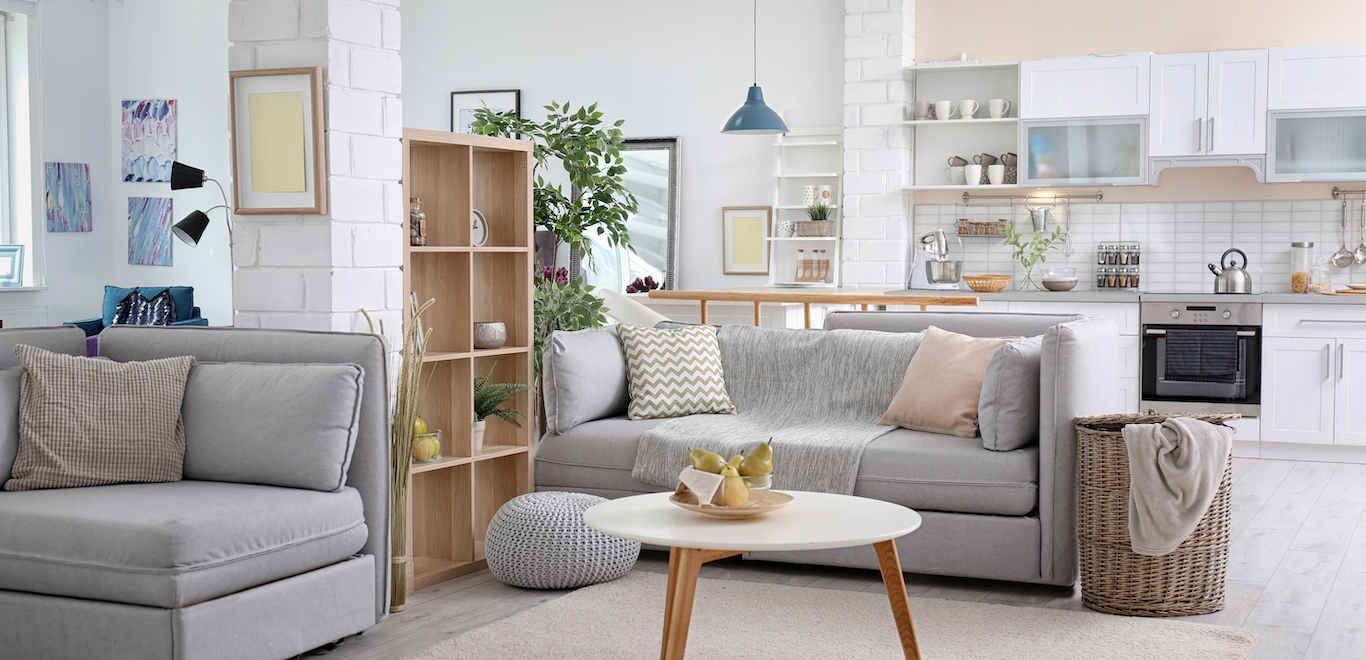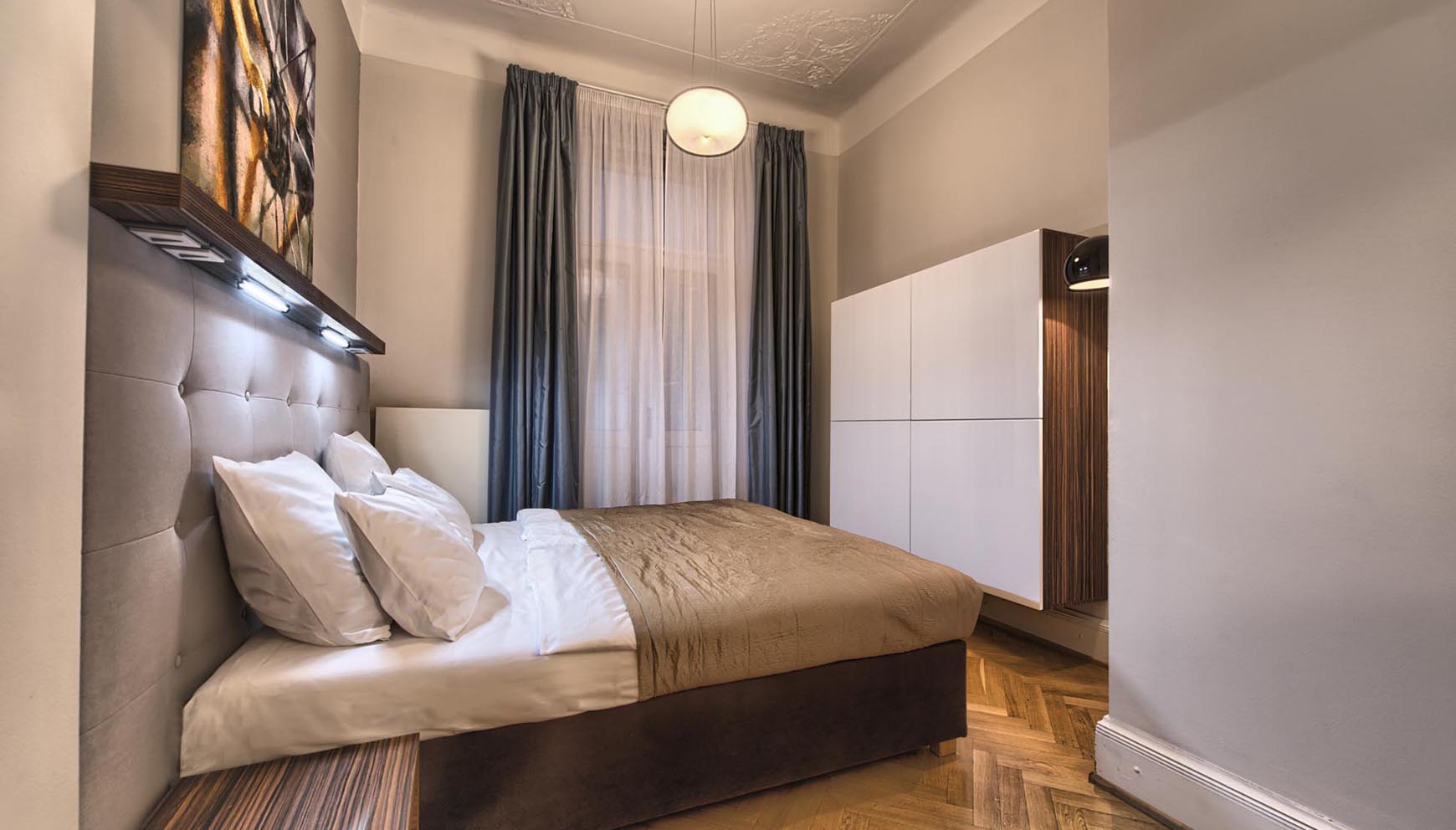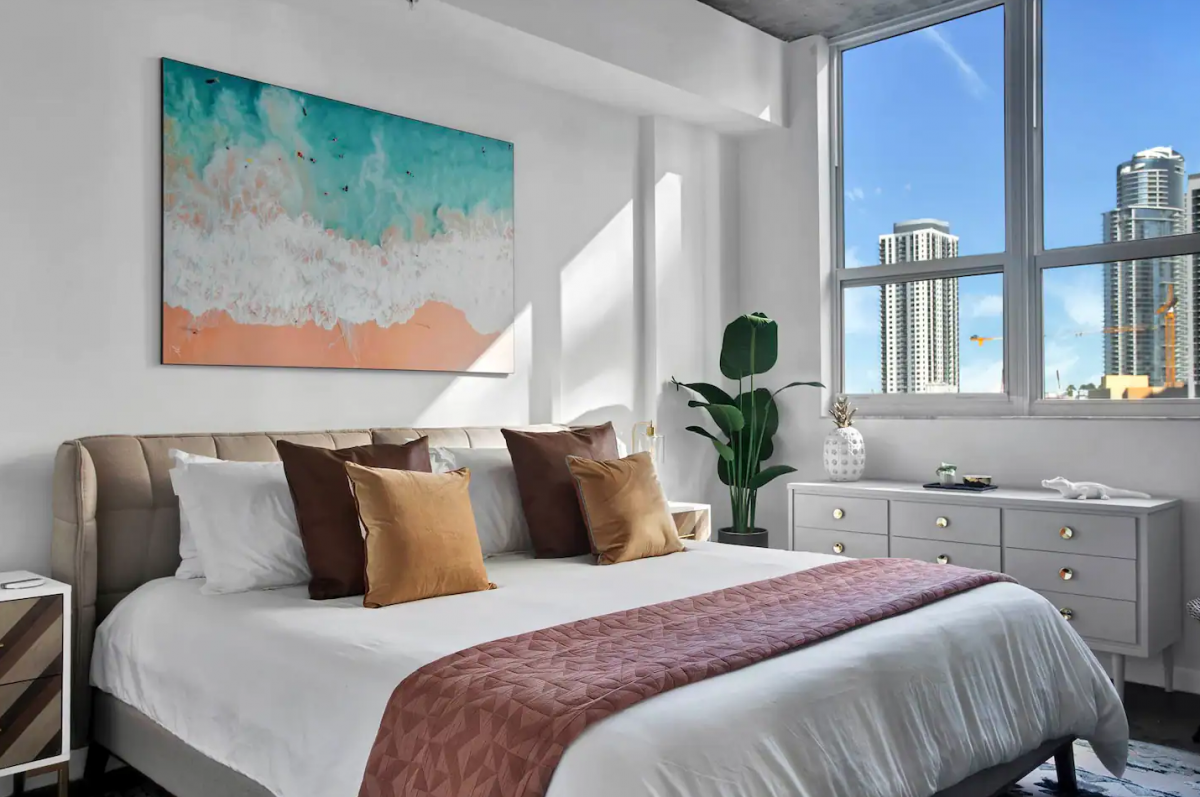Factors Influencing Furnishing Costs

Furnishing a one-bedroom apartment can be an exciting but potentially expensive endeavor. Several factors can significantly impact the overall cost of your furniture purchases. Understanding these factors will help you make informed decisions and stay within your budget.
Apartment Size
The size of your apartment is a primary determinant of furnishing costs. Larger apartments naturally require more furniture to fill the space adequately. For example, a spacious one-bedroom apartment might need a larger sofa, a dining table that can accommodate more guests, and additional storage solutions. Conversely, a smaller apartment can be furnished effectively with compact and multi-functional furniture pieces.
Essential Furniture Items
A well-furnished one-bedroom apartment typically includes a core set of essential furniture items:
- Bed and Bedding: A comfortable bed, including a mattress, bed frame, and bedding, is crucial for a restful night’s sleep.
- Sofa or Couch: A sofa or couch provides seating for relaxation and entertaining guests.
- Coffee Table: A coffee table offers a surface for drinks, snacks, and decorative items.
- Dining Table and Chairs: A dining table and chairs are essential for meals and casual dining.
- Television Stand: A television stand provides a designated space for your TV and entertainment equipment.
- Storage Solutions: Storage solutions, such as bookshelves, dressers, and nightstands, are essential for organizing your belongings.
- Lighting: Adequate lighting is crucial for creating a functional and inviting atmosphere. Consider lamps, overhead lighting, and accent lighting.
Personal Style and Comfort
Your personal style and desired level of comfort play a significant role in furnishing costs. For instance, someone who prefers a minimalist aesthetic might choose simple and functional furniture pieces, while someone who enjoys a more luxurious style might opt for high-end furniture with intricate details. Similarly, someone who prioritizes comfort might invest in a high-quality mattress and comfortable seating, while someone with a more modest budget might prioritize functionality over comfort.
New vs. Used Furniture
The decision to purchase new or used furniture can significantly impact your budget. Buying new furniture offers the advantage of choosing from a wide variety of styles, materials, and brands. However, new furniture can be expensive. Purchasing used or secondhand furniture, on the other hand, can be a more budget-friendly option. Many online marketplaces and local thrift stores offer a wide selection of used furniture at significantly lower prices.
Cost-Saving Strategies
Several strategies can help you furnish your one-bedroom apartment while staying within your budget:
- Shop Around: Compare prices from different retailers, both online and in-store, to find the best deals.
- Consider Furniture Rental: Renting furniture can be a cost-effective option, especially if you plan to move frequently.
- DIY Projects: Upcycle or repurpose old furniture pieces to create unique and personalized pieces.
- Utilize Multi-Functional Furniture: Opt for furniture that serves multiple purposes, such as a sofa bed or a coffee table with storage.
- Prioritize Essential Items: Focus on purchasing essential furniture items first and gradually add additional pieces as your budget allows.
Budgeting and Planning

Furnishing a one-bedroom apartment can be an exciting endeavor, but it’s essential to approach it with a well-defined budget and a strategic plan to avoid overspending. A structured approach ensures that you get the furniture you need while staying within your financial limits.
Creating a Realistic Furnishing Budget
Creating a realistic budget involves assessing your financial situation, prioritizing needs over wants, and allocating funds for different furniture categories.
- Assess Your Financial Situation: Determine your overall financial resources and create a budget that reflects your current income and expenses. Consider your monthly income, fixed expenses (rent, utilities, etc.), and savings goals.
- Prioritize Needs Versus Wants: Differentiate between essential furniture items that are necessary for functionality (bed, couch, table) and those that are desirable but not essential (accent chairs, decorative pieces).
- Allocate Funds for Different Categories: Break down your budget into categories such as:
- Bedroom: Bed frame, mattress, nightstand, dresser, wardrobe, mirror.
- Living Room: Sofa, coffee table, TV stand, media console, rug.
- Dining Area: Dining table, chairs, buffet or side table.
- Kitchen: Counter stools, bar cart, pantry storage.
- Bathroom: Bath mat, towel rack, shower curtain.
- Decor: Artwork, lamps, throws, curtains, plants.
Designing a Sample Budget
Here’s a sample budget for furnishing a one-bedroom apartment, assuming a total budget of $3,000. This budget prioritizes essential furniture items while allowing for some decorative elements.
- Bedroom: $1,200 (Bed frame: $400, Mattress: $600, Nightstand: $100, Dresser: $100)
- Living Room: $1,000 (Sofa: $600, Coffee table: $200, Rug: $200)
- Dining Area: $300 (Dining table: $200, Chairs: $100)
- Kitchen: $200 (Counter stools: $100, Bar cart: $100)
- Bathroom: $100 (Bath mat: $50, Towel rack: $50)
- Decor: $200 (Artwork: $100, Lamps: $100)
Planning and Purchasing Furniture
A step-by-step guide to planning and purchasing furniture for a one-bedroom apartment:
- Measure Your Space: Carefully measure the dimensions of each room to ensure the furniture you choose will fit comfortably. This is crucial for avoiding awkward placements and maximizing space.
- Create a Floor Plan: Draw a simple floor plan of each room to visualize the placement of furniture. This will help you determine the size and style of furniture that will best suit your needs.
- Consider Your Lifestyle: Think about your daily routines and how you will use the space. For example, if you entertain frequently, a larger sofa and coffee table might be necessary.
- Research Furniture Stores and Online Retailers: Explore different stores and websites to compare prices, styles, and quality. Take advantage of sales and discounts to maximize your budget.
- Read Reviews: Before making a purchase, read reviews from other customers to get an idea of the quality, durability, and comfort of the furniture.
- Visit Showrooms: If possible, visit showrooms to see and feel the furniture in person. This will help you assess the quality and comfort of the pieces.
- Prioritize Needs Over Wants: Stick to your budget and prioritize essential furniture items over decorative elements. You can always add decorative touches later as your budget allows.
- Consider Multifunctional Furniture: Look for furniture pieces that serve multiple purposes, such as a sofa bed or a dining table that can double as a desk. This can help you save space and money.
- Don’t Be Afraid to Negotiate: If you are purchasing from a local furniture store, don’t be afraid to negotiate the price. You may be able to get a better deal if you are willing to haggle.
- Factor in Delivery Costs: Remember to include delivery costs in your budget. Some retailers offer free delivery, while others charge a fee.
- Assemble Furniture Carefully: If you are purchasing furniture that requires assembly, read the instructions carefully and assemble it correctly to avoid damage or injury.
Prioritizing Needs Versus Wants
Prioritizing needs over wants is crucial for staying within your budget and ensuring that you get the essential furniture items you need.
“It’s better to have a comfortable bed and a functional sofa than a fancy coffee table and an expensive rug.”
This approach allows you to allocate your funds strategically, focusing on the furniture that will provide the most value and functionality for your living space.
Furniture Shopping and Sourcing: How Much To Furnish A One Bedroom Apartment

Furnishing your one-bedroom apartment can be an exciting process, but it also requires careful planning and consideration of your budget. Once you have a clear idea of your needs and preferences, you can start exploring different furniture shopping options.
Furniture Shopping Options
There are various ways to source furniture for your apartment, each with its own advantages and disadvantages.
- Online Retailers: Online retailers offer a vast selection of furniture from various brands and styles, often at competitive prices. The convenience of browsing and purchasing from the comfort of your home is a significant advantage. However, it’s essential to carefully review customer reviews, shipping policies, and return procedures before making a purchase.
- Brick-and-Mortar Stores: Brick-and-mortar stores allow you to physically inspect furniture, assess its quality, and get a feel for its size and proportions. You can also benefit from in-person consultations with sales associates who can offer personalized recommendations. However, brick-and-mortar stores may have limited selection and higher prices compared to online retailers.
- Consignment Shops: Consignment shops offer a unique opportunity to find high-quality furniture at discounted prices. These shops often carry gently used pieces from reputable brands, providing a sustainable and budget-friendly option. However, selection can be limited, and you might need to spend time searching for specific items.
Comparing Furniture Retailers, How much to furnish a one bedroom apartment
To make informed decisions, it’s helpful to compare different furniture retailers based on factors like price, quality, and style.
| Retailer | Price | Quality | Style | Pros | Cons | Online Retailers (e.g., Wayfair, Amazon) | Generally lower prices | Varies depending on the brand and material | Wide range of styles | Convenient, vast selection, often offer discounts and promotions | Difficulty assessing quality, potential shipping delays, return procedures may vary | Brick-and-Mortar Stores (e.g., IKEA, Crate & Barrel) | Prices vary, often higher than online retailers | Generally good quality, especially for well-known brands | Varies depending on the store | In-person inspection, personalized service, potential for immediate delivery | Limited selection, higher prices, potential for crowded stores | Consignment Shops | Discounted prices | Often high quality, gently used pieces | Varies depending on the shop | Sustainable option, unique finds, affordable prices | Limited selection, potential for damage or wear and tear |
|---|
Researching Furniture Prices and Comparing Options
When researching furniture prices, it’s essential to be comprehensive and compare prices from multiple retailers.
- Use price comparison websites: Websites like Google Shopping and PriceRunner allow you to compare prices from different retailers for the same furniture item.
- Check for sales and promotions: Most retailers offer sales and promotions throughout the year, especially during holidays. Subscribe to email newsletters and follow retailers on social media to stay informed about upcoming deals.
- Consider the total cost: When comparing prices, remember to factor in shipping costs, taxes, and assembly fees, if applicable.
Negotiating Prices and Finding Deals
While furniture prices are often fixed, there are still opportunities to negotiate and find deals.
- Shop during off-season: Retailers often offer discounts on furniture during the off-season, typically during the winter months.
- Ask for discounts: Don’t be afraid to ask for discounts, especially if you’re buying multiple items or are willing to pay cash. Be polite and respectful, and be prepared to walk away if you don’t get a satisfactory price.
- Look for clearance items: Retailers often have clearance sections where you can find furniture at significantly reduced prices. These items may have minor imperfections or be discontinued models.
How much to furnish a one bedroom apartment – Furnishing a one-bedroom apartment can be a fun, but budget-conscious endeavor. A key piece is a stylish and functional dresser, and a mirror dresser can make a small space feel larger. If you’re looking for inspiration, check out bedroom with mirror dresser for ideas on how to make the most of your space.
Once you have the big pieces in place, you can add personality with accessories and décor to complete your cozy haven.
Furnishing a one-bedroom apartment can be surprisingly budget-friendly, especially if you focus on practical and stylish pieces. Consider adding a touch of industrial chic with metal side tables for bedroom , which can be found at various price points. These tables offer a sleek and modern look while providing functional storage, helping to keep your budget in check while adding a sophisticated touch to your space.